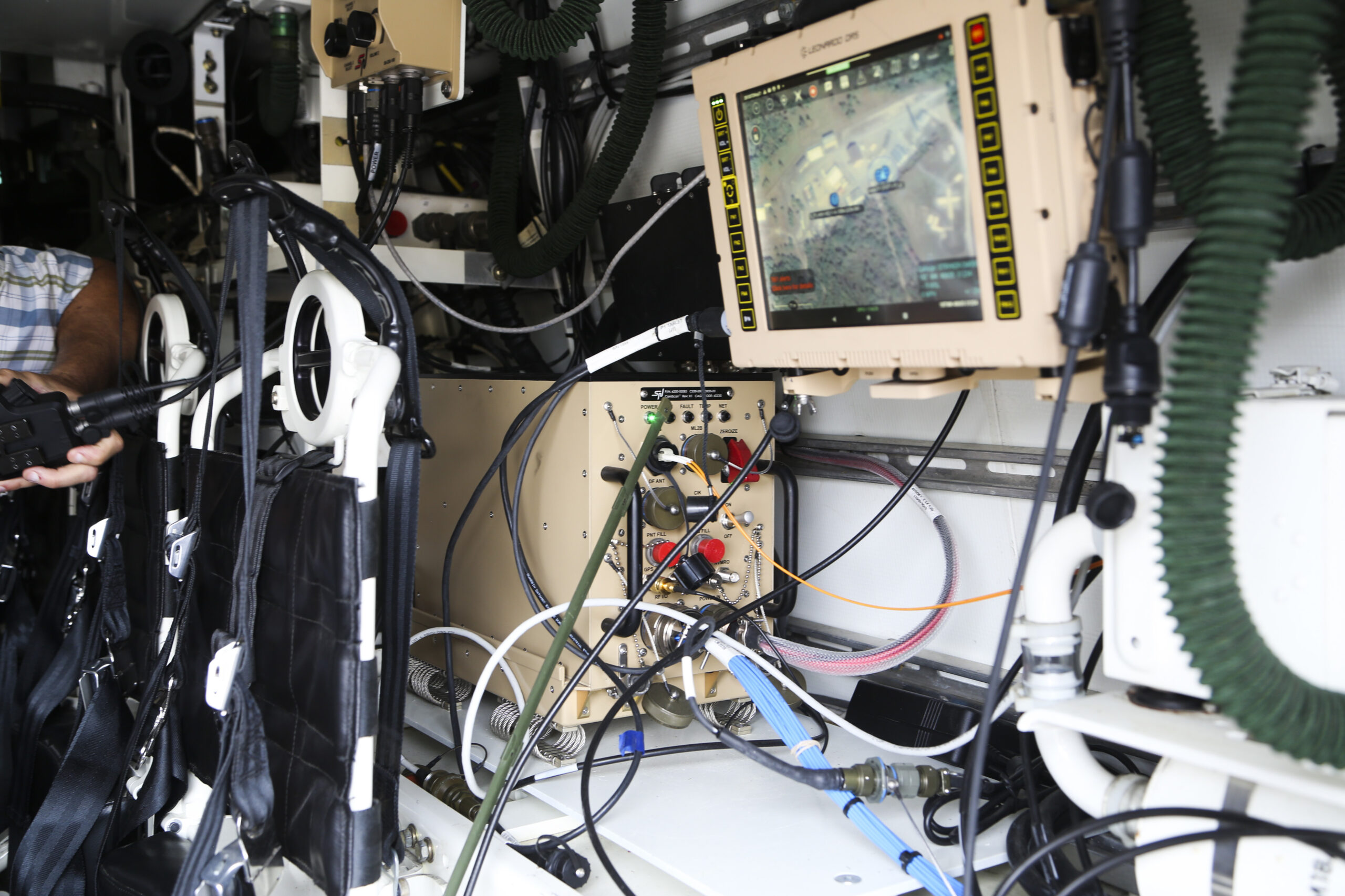
The importance of “time” in military operations has been touted since Sun Tzu wrote that “speed is the essence of war,” and today it’s essential for networking and situational awareness as part of position, navigation and timing.
Time has taken on even greater significance in the near-peer environment, as a mastery of time is especially vital for multi-domain operations among U.S. military services and allies who need precise coordination. That means not just time on the clock but also data and communications traversing defense networks.
Given open standards primarily rely on Ethernet communication and the massive growth of networked data, a new challenge has emerged – how to prevent the most critical and time sensitive data from getting bogged down and delayed by all the other traffic on the network. The standards and technologies that prevent that from happening are called Time Sensitive Networking (TSN), and for warfighters they are not only an enabler of network communications for multi-domain operations, but also essential for mission- and safety-critical platform operations.

“Think of the fully digital Ethernet backbone in modern platforms, which handles a series of separate subsystems or devices trying to send and receive data simultaneously using Ethernet for various functions at varying levels of criticality,” said Shaun Fischer, division vice president for Business Development at Abaco Systems. “I know everyone has experienced glitches with streaming a movie at home on Netflix. Is it your streaming device? Is it the WiFi or the ISP? Maybe it’s your teenagers slowing down the network with online games.
“Now consider a similar scenario in the combat platform. When maneuvering the vehicle using video feeds or engaging a target on the battlefield through a digital control system, these mission- and safety-critical functions must not be delayed by other forms of network traffic. The vehicle crew is relying on these functions for mission success and survivability. A spinning ‘wait’ message is not acceptable.”
Abaco/TTTech Aerospace partnership on TSN
There’s no “wait” with TSN, as it allows for the use of Ethernet in a deterministic fashion – meaning that you can accurately predict traffic behavior through the network. TSN enables different traffic classes to co-exist on the same network architecture in a way that the higher criticality traffic will take priority on the network over “best-effort” traffic, which is traffic that isn’t absolutely necessary for critical platform operations.
Such TSN-enabled computing solutions are the specialty of both Abaco Systems and TTTech Aerospace, who are now jointly delivering these solutions for applications in the US Army’s next-generation combat platforms.

“When you combine the features of TSN with traffic shaping and other mechanisms, previously federated systems can now co-exist on a single scalable network, as they will not interfere with each other – resulting in fewer LRUs and a greatly reduced integration effort for the system owners,” explained Alvaro Soares, director of Product Management and Customer Programs for Aviation at TTTech North America. “When compared to legacy technologies such as MIL-STD-1553 and ARINC 429, TSN is capable of much higher bandwidths and has the benefit of being adopted in multiple industries, such as automotive and IoT – so there is the potential for being able to leverage innovations from those industries in the aviation and defense industries.”
According to Fischer, “TTTech Aerospace brings to the table a combination of expertise found nowhere else in the industry,” and noted that they are the only company to have certified a deterministic Ethernet solution where you can mix synchronous and asynchronous traffic classes seamlessly on the same wire, known as TTEthernet. TTTech Aerospace also has 25 years of experience in FAA Design Assurance Levels DAL A-certified deterministic networks.
“With the integration of Abaco’s high-performance, rugged embedded computing hardware expertise and TTTech’s mature TSN hardware/software/firmware and deterministic network architecture proficiency, we can deliver the best of both worlds in an open standards solution with optimization for military and defense applications,” said Fischer.
“Our first collaboration with TTTech Aerospace is a TSN Endpoint, specifically the single board computer SBC3513L. This SOSA aligned, I/O intensive SBC plays a key role in platform electronics systems by hosting mission- and safety-critical applications and providing TSN optimized interfaces directly to the backplane of the common computing and/or other subsystem to ensure TSN compliance at 10G speeds. This SBC with the TSN capability is already seeing great success in a short time.”

Leveraging open systems for CMFF
These solutions are engineered to excel in mission- and safety-critical settings such as the U.S. Army’s Ground Combat Systems Common Infrastructure Architecture (GCIA) and Future Vertical Lift (FVL) Architecture Framework (FAF). Both GCIA and FAF architectures leverage open standards like Sensor Open System Architecture (SOSA), Future Airborne Capability Environment (FACE), and Hardware Open Systems Technologies (HOST) for platform electronics subsystems, as well as TSN for the network.
In addition, the Army has embarked on a major standards-based vehicle integration program called C5ISR/EW Modular Open Suite of Standards (CMOSS) Mounted Form Factor (CMFF). It will enable the rapid fielding of technology modernizations through drop-in capability cards without the need to modify other, integrated hardware like cabling and mounts.
Abaco’s commercial open architecture computing and rugged embedded electronics are well suited to that program.
“CMFF is essentially converging traditionally separate C5ISR/EW subsystems like C2/battle management computing, tactical communications, networking, Assured PNT, EW/SIGINT, and cyber security into an open architecture, common computing solution for both Army ground and aviation platforms,” said Fischer. “It will allow the Army to keep pace with the ever-increasing computing performance needed to address near-peer adversaries while significantly reducing size, weight and power, and complexity of the systems, as well as increasing the number of options for compatible hardware/software components from a larger industrial base. The USMC is quickly moving in this direction, as well.”
Abaco is focused on two roles within this program. First and foremost, it strives to deliver a balance of high-performance computing and cost efficiency across all the capability requirements – what the company calls being “right-sized.” With potentially significant numbers of platforms for ground and aviation, CMFF must walk the fine line between budgets of today and performance of tomorrow. Abaco has optimized many of its products accordingly.
“Beyond products, we have a significant understanding of what it takes to architect high-performance computing solutions and a vast ocean of experience to offer our customers,” he said. “The term ‘trusted advisor’ comes up frequently in our internal discussions and culture, and that extra level of technical support has been a cornerstone for our success over the years.”
Abaco intends to apply that same approach to CMFF, particularly in two areas: advanced thermal management capabilities, and the expertise of its partner ecosystem centered around command and control and deterministic Ethernet networking (TSN).
The difference is standards
It’s clear that the technology curve and the equivalent of Moore’s law on processing will continue to accelerate. To not only keep pace but create overmatch, the Army is embracing open standards to create more interoperability between subsystems, platforms, and partners.
Both Abaco Systems and TTTech Aerospace are front and center as open-standards-based, high-performance computing providers.
“It’s not just about delivering a card with software or firmware on it,” said Fischer. “It’s also delivering the support, toolset, understanding, training, architecting, and validating experiences for deterministic networks that this particular combination between Abaco and TTTech Aerospace can deliver efficiently and affordably with high performance.”
Added Soares, “It’s also not just about having a single board computer that does TSN. That’s fine by itself, but to architect a system that does TSN end-to-end and has C2 functionality is the key.
“Going beyond the components and toward a network solution is where this partnership shines,” he said, adding that the Abaco team comes in with the know-how on the form factors and standards, and TTTech Aerospace brings the network mindset.
